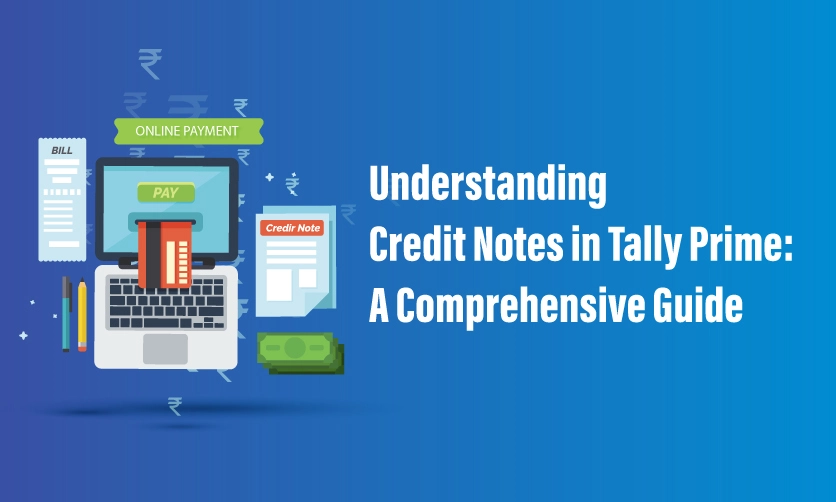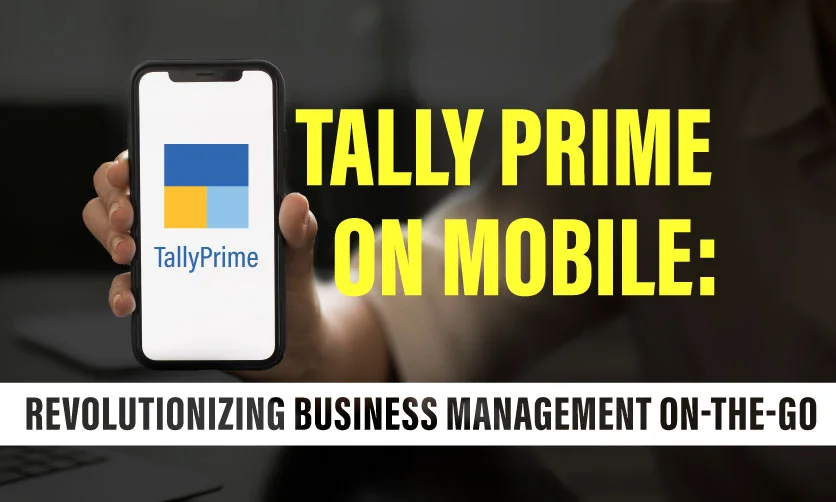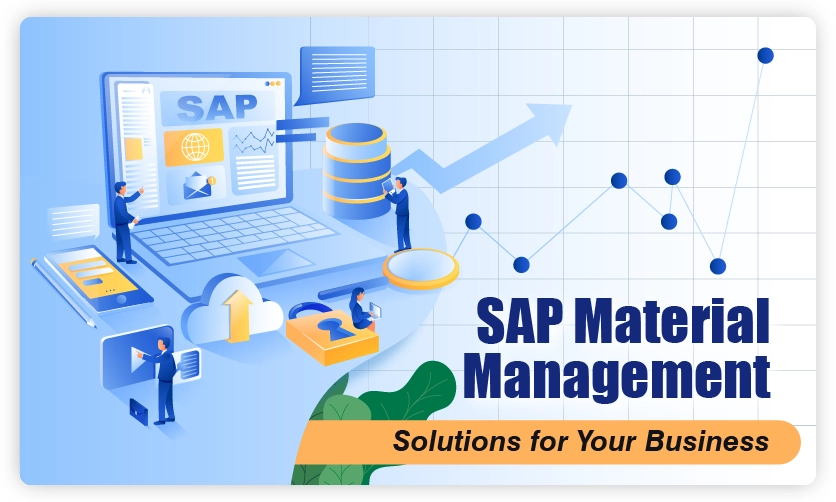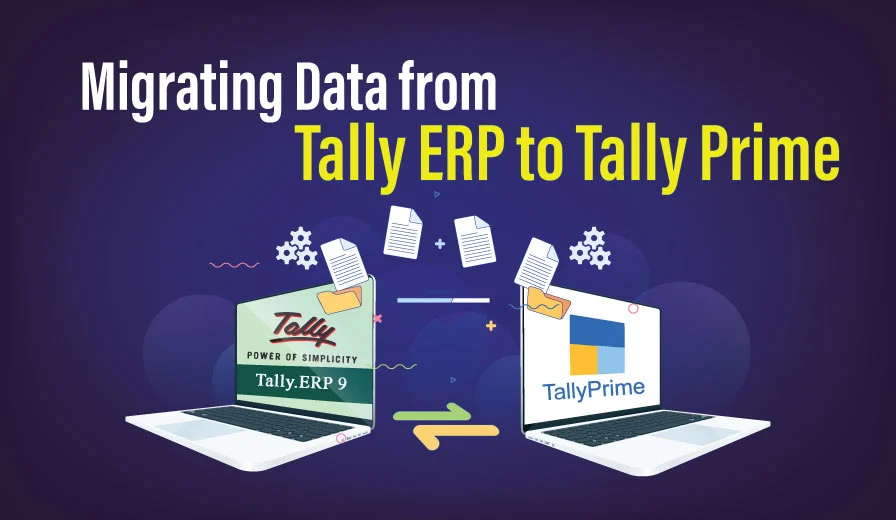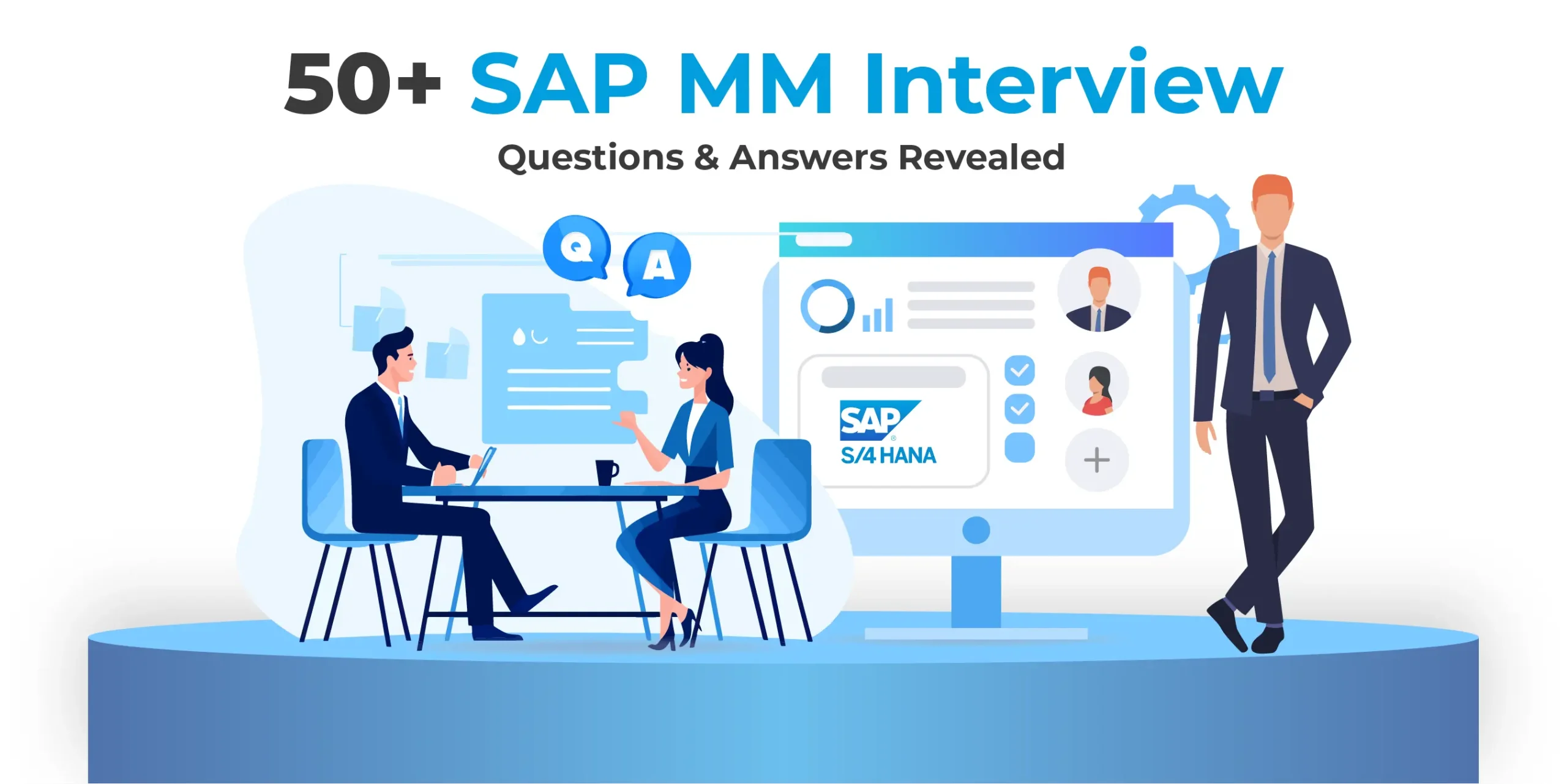
50+ SAP MM Interview Questions and Answers Revealed
Are you a job seeker looking for SAP MM interview questions and answers for interview preparation, or just seeking information for knowledge enhancement? Whatever the reason, you have landed in the right place.
Yes, in the complex world of ERP, looking for a career in procurement, logistics, or inventory management requires proficiency in SAP’s Material Management (MM) module. We are here to help you with a complete list of SAP MM interview questions commonly asked in the interview.
This blog will prepare you to crack the interview by providing insightful answers to SAP MM interview questions. Let’s start your journey to becoming an SAP MM Specialist today!
Table of Contents
-
- 1. Define SAP MM?
- 2. How can SAP MM benefit businesses?
- 3. What core data sets (master files) are essential for running SAP MM?
- 4. Which components are fundamental for running SAP Material Management effectively?
- 5. Explain the terms goods receipt and post-goods receipt.
- 6. How does SAP MM categorize different types of inventory (stock) within a company?
- 7. Can you explain the concept of consignment stock in SAP MM
- 8. Is a purchase requisition an internal document used within the company or an external document sent to vendors?
- 9. Explain the different info record types in SAP MM.
- 10. What special stocks does SAP MM offer?
- 11. What assignment types are typical in SAP Material Management?
- 12. What key fields are in the purchasing view of SAP MM?
- 13. Why is the batch record significant in SAP MM?
- 14. How do you connect a document to a vendor master record?
- 15. Which transaction code removes a batch in SAP MM?
- 16. How do you authorize a purchase order release? Which Transaction Code shows and resets the purchase order release?
- 17. Which transaction code extends the material view in SAP MM?
- 18. What does Source List mean to you? Which transaction code is utilized for Source List creation?
- 19. In SAP MM, what is the abbreviation ERS?
- 20. What conditions must be met to create a purchasing info record in SAP MM?
- 21. How do you mark material for deletion in SAP MM?
- 22. How do you modify the standard price of the SAP master material?
- 23. What does purchase requisition mean to you?
- 24. What does RFQ stand for in SAP MM? What’s its purpose?
- 25. What do production and purchase orders mean to you?
- 26. What is the purpose of the Purchase Info Record?
- 27. How can you create a vendor account group in SAP MM?
- 28. In SAP MM, what are the various procurement types for creating purchase requisitions?
- 29. What does master data mean to you?
- 30. What does consumption-based planning (CBP) mean to you?
- 31. Define the term material requirement planning (MRP).
- 32. How do MRP and CBP differ?
- 33. What does a transaction code signify in SAP MM?
- 34. What does the term “material ledger” signify in SAP MM?
- 35. How can a vendor return be handled without referencing a purchase order?
- 36. What does the term Master Production Schedule (MPS) mean in SAP MM?
- 37. What is the purpose of the Confirmation Control Key (CCK)?
- 38. What does the term “Batch Information Cockpit” mean in SAP MM?
- 39. What is the Lot Size in SAP MM?
- 40. What purpose does ‘Split Valuation’ serve in SAP MM?
- 41. What accounts are established in SAP MM? Why is assigning these accounts important?
- 42. How can you view the complete list of reservations in the system?
- 43 What types of ERPs exist?
- 44. What does “External Procurement” mean?
- 45. How is pricing calculated in MM?
- 46 What does the “subcontracting cycle” refer to in SAP MM?
- 47. What are Cost Centers?
- 48. Explain MIRO in short?
- 49 Can a purchase requisition be modified after it’s been submitted for approval?
- 50. What information is typically included in a source list within SAP MM?
- 51. What are the different levels of invoice verification available in SAP MM?
1. Define SAP MM?
SAP MM, which stands for SAP Material Management, is a software module within SAP software. The main function of SAP MM is to manage a company’s materials. The functionality involves many tasks, from purchasing and inventory control to warehousing and material valuation.
2. How can SAP MM benefit businesses?
The following are the main benefits of the SAP MM module:
- Streamlines procurement processes: From purchase requisitions to orders or in-between communication, everything is controlled and managed with SAP MM.
- Optimizes inventory levels: The feature of real-time data tracking in SAP MM reduces the issue of stockouts and overstocking
- Improves cost control: Get real-time information on material costs.
- Enhances visibility and reporting: The software allows you to track the movement of materials, stock levels, and vendor performance simultaneously. This improves the transparency and reporting system.
3. What core data sets (master files) are essential for running SAP MM?
- Material Master: This will give you complete information on every material. The information consists of descriptions, classifications, and pricing for every material.
- Vendor Master: Contains information on store suppliers, their contact details, payment terms, and purchasing conditions.
- Purchasing Info Record: The purchase info record combines the most used material and vendor masters for faster purchase order creation.
4. Which components are fundamental for running SAP Material Management effectively?
These master files are crucial, but other necessary components include functionalities for:
- Creating purchase requisitions and purchase orders.
- Managing goods receipts and inventory levels.
- Processing invoices and managing vendor payments.
- Generating reports on material usage and costs.
5. Explain the terms goods receipt and post-goods receipt.
- Goods Receipt: This process involves the recording of goods received physically and the final verification of ordered goods against the purchase order.
- Post-Good Receipt: The final step of the goods receipt process is updating the inventory record and accounting entries.
6. How does SAP MM categorize different types of inventory (stock) within a company?
SAP MM consists of various stock categories listed below:
- Project Stock: This option will specify the materials that are dedicated to specific projects.
- Returnable Packaging: Reusable packaging is tracked within the system.
- Consignment Stock: Materials that are owned by the vendor but kept at the customer’s location are referred to as consignment stock.
7. Can you explain the concept of consignment stock in SAP MM
This stock type in the SAP MM module permits customers to use the vendor’s materials without officially buying them. The vendor has the authority to take back the stock ownership and refill it as needed based on consumption.
8. Is a purchase requisition an internal document used within the company or an external document sent to vendors?
A purchase requisition comes under the internal document type category. The document is generated within a department that requests the procurement team to purchase specific materials.
9. Explain the different info record types in SAP MM.
There are two types of info records:
- Fixed Info Record: Data of mostly used purchased materials from a single vendor is stored in the fixed info record.
- Info Record with Source List: Similar to fixed, but restricts purchases to vendors on a pre-approved source list.
10. What special stocks does SAP MM offer?
You already read about the consignment stock, in addition to that there are two more stocks available in SAP MM :
- Pipeline Stock: Those materials that have not reached the desired location or in other terms moving between locations (For example: during transportation of goods).
- Blocked Stock: The materials that are not usable due to quality issues or other restrictions are considered blocked stock.
11. What assignment types are typical in SAP Material Management?
The two common types of assignment in the SAP material management system are
- MRP Type: It helps in the planning strategy for a material (For example, MRP, reorder point).
- Special Stock Type: Assigns a material to a specific special stock category (e.g., consignment, project).
If you are reading each SAP MM interview questions and answers carefully. This will help you a lot in preparation and clearing the interview rounds.
You can also read some more articles on SAP for knowledge enhancement:
Let’s continue with SAP MM interview questions
12. What key fields are in the purchasing view of SAP MM?
The purchasing view in SAP material management contains important information for procurement, like:
- Order Unit: The total no of materials that are ordered. The quantity may be in a box, a dozen, or pieces.
- Minimum Order Quantity: Minimum order amount that is compulsory in a single purchase order.
- Source List: This will check if any pre-approved vendor list exists for this material.
- Info Record: Links to the relevant purchasing info record for the material.
13. Why is the batch record significant in SAP MM?
Batch records play a vital role in tracking the specific characteristics and expiry dates of a material batch. Both of these pieces of information are important for:
- Quality Control: This function will track materials from the starting point. In case, if any issue is created, the system can identify the defective batch and will recall those specific ones.
- Costing: Since materials from different batches can vary in terms of qualities. This depends on the situation when they were made (like a newer batch vs. an older one). This system assigns different costs based on these specific traits.
14. How do you connect a document to a vendor master record?
Yes, there is an option to link documents (like purchase orders) to a vendor master record. You can select and enter the vendor’s unique identification number during document creation, and your document is linked. This establishes the connection between the purchase and the supplier.
15. Which transaction code removes a batch in SAP MM?
If it’s too necessary then only delete a batch in SAP MM, otherwise it is not recommended. For deleting a batch, enter a transaction code MB1A. You can choose alternative options like blocking the batch if deletion is not necessary.
Curious to read more SAP MM Interview questions and answers? This blog offers a wide range of essential SAP MM interview questions to jumpstart your learning path. Stay here and grow in your career.
16. How do you authorize a purchase order release? Which Transaction Code shows and resets the purchase order release?
Before sending it to the vendor, a purchase order is released. Purchase required internal approval. There are two options available for purchase order release
- Firstly, you can release directly from the document.
- Secondly, use transaction code ME21N.
If, you want to check and view the release status of a purchase order or want to reset a previous release, use the transaction code ME22N. This option gives you an option for modifications before sending the order to the vendor.
17. Which transaction code extends the material view in SAP MM?
The transaction code for extending the material view in SAP MM depends on the two situation
If you are creating a new material record, then use the code MM01. This option will allow you to assign different values, like purchasing or sales.
In the second case, if you already have a material record and want to modify something, then use the transaction code MM02.
18. What does Source List mean to you? Which transaction code is utilized for Source List creation
A source list is defined as the pre-approved vendor list eligible for the supply of specific materials. This list will create limited options for vendors for the supply of materials and make the process easier. You can create a source list using the transaction code ME01.
19. In SAP MM, what is the abbreviation ERS?
ERS stands for External Representation Source. ERS gives you the option to integrate an external source of supply (like a webshop) to a material within SAP MM. This allows easy integration of external procurement options with your internal material management system.
20. What conditions must be met to create a purchasing info record in SAP MM?
There are two pieces of data required for creating a purchasing info record in SAP MM:
Valid Material Master: This record contains information about the material like, its description, quantity, and classification.
Vendor Master Record: Vendor master data stores information about vendors, their contact details, payment, policies, and details on pre-negotiated pricing agreements.
21. How do you mark material for deletion in SAP MM?
In SAP MM, by using a deletion flag, you can indicate any particular data as inactive for future use. This process can be performed through a material master record by inserting a transaction code MM06.
Data marked under a flagged category can not be used for new transactions but is accessible for viewing historical data.
All the SAP interview questions, as explained till now, are just a few basic questions. Take a nap, refresh your mind, and continue your preparation with our SAP interview questions and answer guide.
22. How do you modify the standard price of the SAP master material?
In the SAP material master system, the standard price represents the average price paid for the material.
To update the price, follow the steps: Logistics > Valuation > Valuation Price Determination path within SAP. This will allow you to show changes in market prices or supplier negotiations.
23. What does purchase requisition mean to you?
An internal document generated by a department within a company stating the requirement of material is called a purchase requisition. After generating the document, it is sent to the procurement team for initiating the purchasing process.
24. What does RFQ stand for in SAP MM? What’s its purpose?
RFQ stands for Request for Quotation. This document is created and sent to potential vendors, asking for bids for the required specific materials. This data helps to compare prices and terms from different vendors and choose the best for a purchase order.
25. What do production and purchase orders mean to you?
Production Order: A purchasing order is an internal document stating the in-house manufacturing of a product. The details specified in the documents are the materials, quantities, and routing needed for production.
Purchase Order: An external document used to purchase materials from external vendors. The document outlines the specific materials, quantities, pricing, and delivery terms agreed upon with the supplier.
26. What is the purpose of the Purchase Info Record?
A purchase info record is a combination of the material master and vendor master data. This record keeps all the necessary data within, like standard price, order unit, and preferred vendor for a particular material. This document reduces the task of re-entering all the mentioned information each time a purchase order is created.
27. How can you create a vendor account group in SAP MM?
We can create vendor account groups by using the transaction code XK01. The vendor account group maintains all the vendors with similar characteristics in a single place. This simplifies the vendor management process. For example, we have created a group for all stationery suppliers.
28. In SAP MM, what are the various procurement types for creating purchase requisitions?
According to the purchasing need, you can classify the purchase requisition:
- External Procurement: Purchases from external vendors.
- Consignment Stock: Requesting the vendor to refill the materials in the consignment stock location.
- Internal Procurement: This helps to transfer materials between internal storage locations within the company.
Already know basic SAP MM and searching for some conceptual SAP MM interview questions and answers. Don’t worry, you are in the right place. This article provides a platform for all beginners and professionals to solidify their understanding with advanced SAP MM interview questions and answers.
Stay tuned……..
29. What does master data mean to you?
Master data act as the base of SAP modules. This particular data remains constant throughout the procurement process. In SAP MM, material master, vendor master, and purchasing info record data serve as the master data.
30. What does consumption-based planning (CBP) mean to you?
CBP stands for Consumption-based planning. It is a planning strategy that depends on historical data on actual material consumption. By using data from past usage patterns, it forecasts future material requirements.
31. Define the term material requirement planning (MRP).
MRP works as a planning methodology for calculating the requirement of materials for production plans. This mainly focuses on the Bill of Materials (BOM), Master Production Schedule (MPS), and current inventory levels.
32. How do MRP and CBP differ?
- MRP: Proactive, uses forecasts and MPS to anticipate needs.
- CBP: Reactive, adjusts plans based on actual past consumption data.
Looking to read more articles on SAP, check the below-mentioned articles:
If you want to learn complete SAP modules, then explore the courses here:
Are You Worried, How You Will Clear SAP-FICO InterviewsBe confident! Become A Certified SAP FICO Specialist |
|
| Explore Classroom Course | Explore Online Course |
Hopefully, the SAP MM interview question guide will clear your basic understanding of the SAP MM module. The complete article is designed for the students, who are looking for SAP interview questions and answers in short with clear concepts.
33. What does a transaction code signify in SAP MM?
A transaction code is a shortcut specific to SAP that allows users to navigate directly to a particular function or process within the system. For example, ME21 is the transaction code for creating a purchase order in SAP MM.
34. What does the term ” material ledger” signify in SAP MM?
The material ledger helps track all the financial transactions for a specific material. It provides additional insights like:
- The cost of material over time by considering factors like purchases, consumption, and revaluation.
- Share insight on profitability for specific materials.
- Variance analysis to identify cost deviations from planned budgets.
35. How can a vendor return be handled without referencing a purchase order?
In a few cases, SAP MM permits the processing of returns without a purchase order reference. Mostly, it is considered for damaged goods received outside a formal purchase order process. Use transaction code ME21 (Create Purchase Order) with a specific return movement type to document the return.
36. What does the term Master Production Schedule (MPS) mean in SAP MM?
The MPS defines the planning of the production of finished products that a company wants to produce in a specific period. This plays a major role in material requirements planning (MRP) in SAP MM.
37. What is the purpose of the Confirmation Control Key (CCK)?
The CCK determines when and how production confirmations are created within SAP MM. This helps in managing, how workers report after production is completed by showcasing inventory updates and cost calculations.
38. What does the term “Batch Information Cockpit” mean in SAP MM?
This is a centralized information hub providing comprehensive data on material batches. It allows users to:
- Analyze characteristics, expiry dates, and locations.
- Track batch lifecycles and initiate quality checks.
- Manage tasks and prioritize specific batches for use.
39. What is the Lot Size in SAP MM?
The lot size determines how much quantity of a material is produced or purchased in a single order. Lot size impacts factors like:
- Inventory levels: If the lot size is smaller, then the storage requirement is also less, but the order frequency is higher.
- Production efficiency: Larger lot sizes can reduce setup times but tie up capital in inventory.
40. What purpose does ‘Split Valuation’ serve in SAP MM?
In SAP MM, with the help of split valuation, different price valuations can be assigned for different purposes. This can be helpful for:
- Accounting vs. Tax: The major advantage of split valuation is that it allows for maintaining separate valuations for book value and tax purposes.
- Standard vs. Moving Average Price: This helps to track the standard price alongside the actual average cost of purchased materials.
41. What accounts are established in SAP MM? Why is assigning these accounts important?
Following are the three different accounts created in SAP MM:
- Material accounts: Material accounts represent the value of materials in inventory.
- Expense accounts: This allows you to track costs associated with material purchases.
- Revenue accounts: This account stores revenue earned after selling finished products.
All these accounts are important for tracking the financial health of a company and for cost analysis.
Stay connected, which will help you dominate your interview with in-depth knowledge of SAP MM. What’s next in the SAP MM interview questions and answers guide? Interested in exploring or bored with learning? Freshen up your mind by reading some SAP-related articles or taking a coffee break. The choice is yours!
Master yourself with a complete knowledge of SAP. Read some more insightful articles on SAP and enhance your skill sets.
By understanding the concept of each SAP MM interview question, you will be able to pass the interview easily. We have tried to cover each important SAP MM interview question that most likely the interviewer will ask.
Thoroughly read the SAP MM interview questions and answers and clear your basic doubts related to the SAP MM.
42. How can you view the complete list of reservations in the system?
By using the transaction code MB25, you can view a complete list of all reservations in the system. Reservations “earmark” for a specific material quantity allows you to save the product for usage for a particular purpose (For example, production orders or sales orders). This prevents the material from being used elsewhere.
43. What types of ERPs exist?
There are many ERP vendors in addition to SAP, and each vendor has its strengths and functionalities. A few common examples include:
- Oracle NetSuite
- Microsoft Dynamics 365
- Infor CloudSuite Industrial
- IFS
The key to getting exciting career opportunities in the SAP field might be hidden within… SAP MM interview questions! Here’s why:
- Industry Standard: By knowing the latest SAP MM interview questions and answers, you can answer the industry-related query that the interviewer might ask.
- Confidence Booster: Practicing SAP MM interview questions boosts your confidence with the latest knowledge and industry trends. This helps you to answer confidently, making a strong first impression.
- Preparation Advantage: Having a good Knowledge of potential SAP MM interview questions allows you to respond quickly, highlighting your strengths and relevant skills.
44. What does “External Procurement” mean?
When a company does not produce any materials itself and purchases them from any external vendors, it is called external procurement. SAP MM allows for managing the complete external procurement lifecycle that starts from creating purchase requisitions to receiving and managing vendor invoices.
45. How is pricing calculated in MM?
There are different methods SAP MM deploys for calculating the prices of materials:
Standard Price: A pre-defined average price for a material that will be updated from time to time.
Moving Average Price: The average cost of all materials purchased to date, automatically updated with each new purchase.
FIFO (First-In, First-Out): Values inventory assuming the first materials purchased are the first ones used, impacting cost calculations.
46. What does the “subcontracting cycle” refer to in SAP MM?
A functionality in SAP MM that permits companies to outsource any specific production steps from external subcontractors. SAP MM allows managing the overall process that includes sending materials to the subcontractor, receiving finished components, and settling payments.
47. What are Cost Centers?
Those functions or departments within a company that are not directly associated with generating revenue but control expenses are considered cost centers. For example, it includes HR, marketing, and IT. Their primary role is to keep costs under control and aligned with budgets.
48. Explain MIRO in short.
MIRO stands for Materials Management: Invoice Receipt. MIRO is used in SAP MM for checking and verifying invoices that vendors have generated for purchased materials. This involves verifying invoice details against purchase orders and goods receipts before creating a payable to the supplier.
49. Can a purchase requisition be modified after it’s been submitted for approval?
Yes, you can make changes to a purchase requisition after creating it, but with limitations. A Few minor changes or modifications are allowed. However, making large changes requires creating a new requisition to make sure the process followed is right and approved by the authority.
50. What information is typically included in a source list within SAP MM?
Source lists are generated using the transaction code ME01 in SAP MM. This function defines a set of pre-approved groups of vendors that are eligible to supply specific materials. This process streamlines the purchasing process by offering limited options for reliable suppliers.
51. What are the different levels of invoice verification available in SAP MM?
There are multiple invoice verification methods in SAP MM:
- Two-way Match: Verifies the invoice matches the corresponding purchase order and goods receipt.
- Three-way Match: This requires a physical verification method by ensuring the received materials match both the purchase order and invoice details.
- Four-way Match: This process uses a price verification step that mainly compares the invoice price against pre-negotiated terms or contracts.
Conclusion
I hope you have equipped yourself with valuable skills and knowledge in material management processes by learning SAP MM interview questions and answers. Always remember, that SAP MM is an important tool in any company’s supply chain and inventory management by optimizing their process path.
As you master yourself by reading the SAP MM interview question module, you are one step closer to becoming an SAP professional. Being an SAP MM professional, you will contribute to the overall efficiency and profitability of an organization. If you want to accelerate your career, consider pursuing certifications or attending workshops on SAP to elevate your expertise.
- Understanding Credit Notes in Tally Prime: A Comprehensive Guide - April 26, 2024
- 50+ SAP MM Interview Questions and Answers Revealed - April 19, 2024
- Tally Prime on Mobile: Revolutionizing Business Management On-The-Go - April 5, 2024
